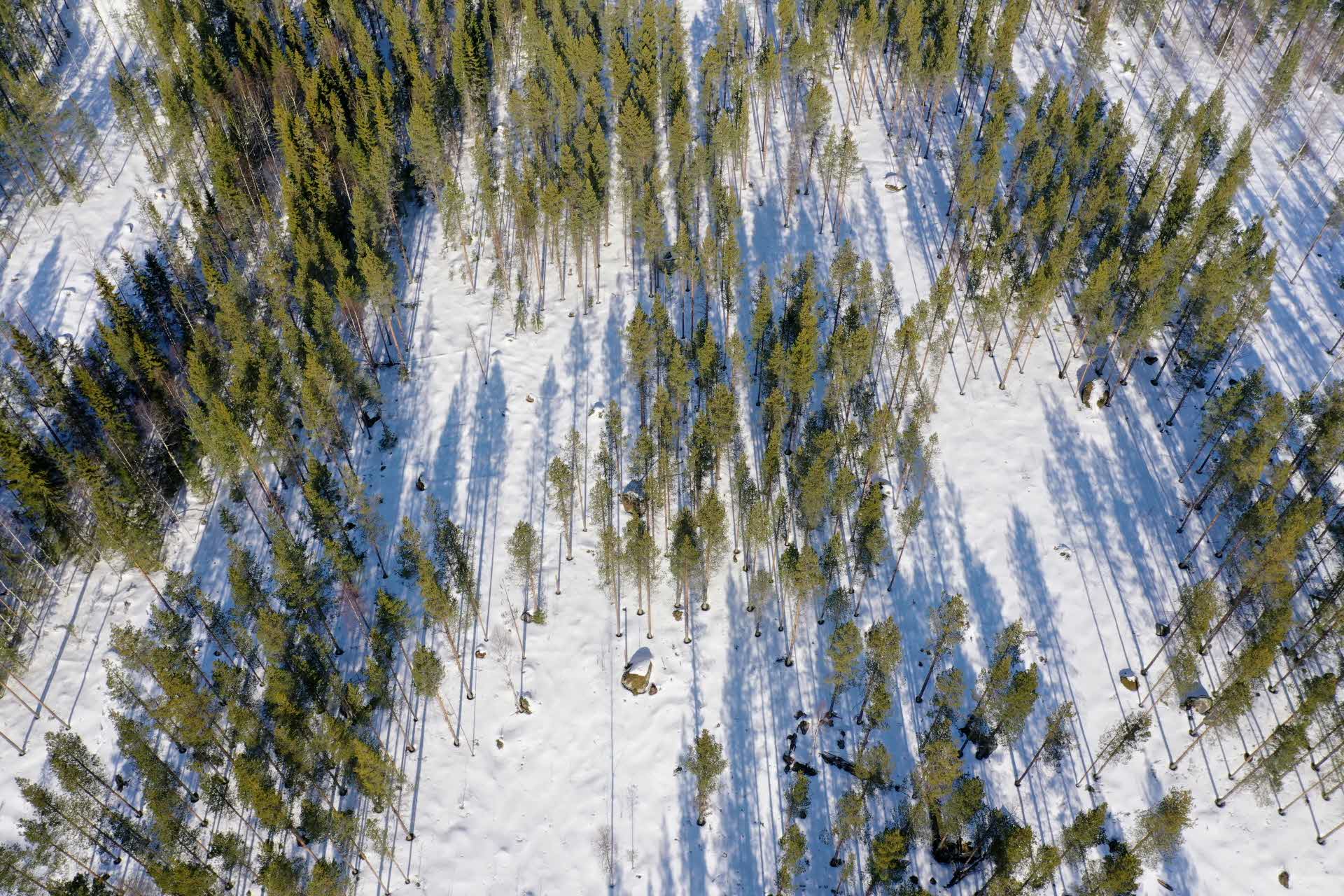SCA tests alternative harvesting method
- News
- Forest
- Sustainability
From above, the site in Tjäderberget Conservation Park looks like a large chess board with forested patches alternated with small harvested areas. SCA has tested a variation of group selection harvesting here with the aim of retaining the feeling of a forest after harvesting and avoiding large treeless areas.

SCA’s Tjäderberget Conservation Park lies between Umeå and Lycksele. High-conservation-value forests have been saved alongside of production forests. The park provides opportunities for SCA to test new and alternative harvesting methods, preferably together with external stakeholders.
“We are testing this method of harvesting, a type of group selection harvesting known as patch cuts, together with the Swedish Forest Agency in Västerbotten. The forest debate is mainly focused on continuous cover forestry, and we are now testing continuity forestry here, where the land is never left bare. Group selection harvesting could prove a rational alternative to forest management without clearcutting,” says Ulf Hallin, one of SCA’s nature conservation experts and responsible for Tjäderberget.
50 patches without forest
The Tjäderberget site comprises 14 hectares and was previously a thinned, well-managed pine forest that is now more than 80 years old. During the winter, about 7 hectares were felled in the form of a patch cut system. Each patch is 30 x 45 meters, and there are just over 50 clear-cut patches in total.
“The harvesting team was positive and thought the job went well. It didn’t take longer than a normal felling operation,” says Ulf.
“By leaving patches of forest next to the harvested patches we can retain the feeling of a forest and avoid the large treeless areas created by normal final harvesting. When new forest eventually grows up in the harvested patches, we can harvest the forested patches,” says Ulf.
The harvested patches will be scarified in the summer and partly planted next year.
“The idea is to test various regeneration methods, both planting and natural regeneration. We will obviously be planting pine, but also testing some birch,” says Ulf.
Greater variation
As for all harvesting operations, SCA has implemented general consideration measures by retaining both individual trees and tree groups.
“We didn’t retain many tree groups, however, since group selection harvesting by definition means that we saved more individual trees,” says Ulf.
“It feels great to walk around here now because there’s more variation. It’s more open and light, and the forest feeling created by the forested patches make the felled areas less intrusive,” says Ulf. “When it comes to biodiversity, we hope that more birds will find their way here as well as insects that need light and warmth and can thrive in patch-cut forest. This method could also promote some types of field mushrooms. But the forest itself doesn’t have any major conservation values such as dead wood, for example, so we won’t be seeing any rare species here for a while.”
Photo: Ulf Hallin